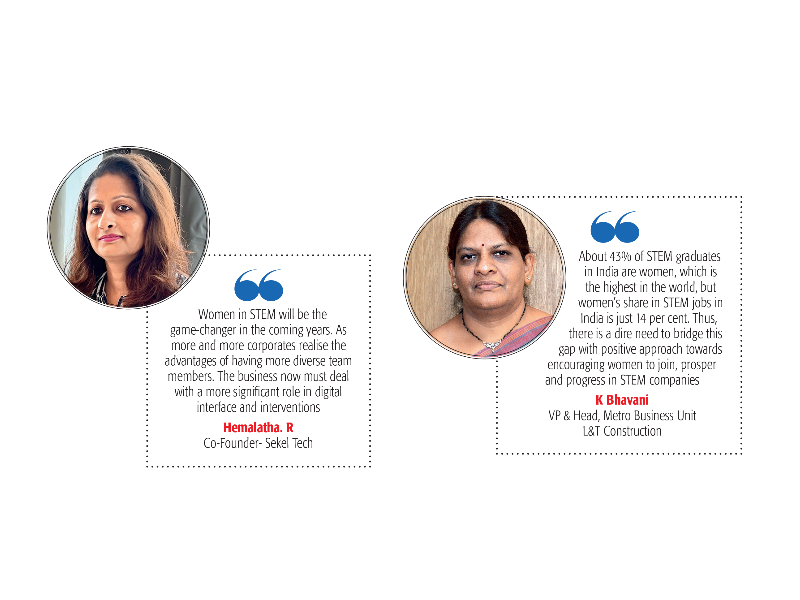India is one of the few countries in the world, to produce the highest number of scientists and engineers as increase in STEM have picked up considerably over the last few years
Picture this. Only 17 women have won a Nobel Prize in physics, chemistry, or medicine since Marie Curie in 1903, compared to 572 men till 2017 while only 28% of all of the world’s researchers are women. This presents a harsh reality of very few women in the field of science, technology, engineering and mathematics or STEM, introduced in 2001 by scientific administrators at the US National Science Foundation.
According to experts, the under-representation and disparity of women in STEM are results of deep-rooted social stigma, discrimination, biases, social norms, and expectations that influence the quality of education they receive and the subjects they study. This divergence in professional choices not only reflects a missed opportunity, but also highlights the imbalance in the society where one gender is suppressed with limitations and restrictions.
World Bank data showed that in 107 of 114 economies, there are fewer female than male STEM graduates. Globally, 18% of girls in tertiary education are pursuing STEM studies compared to 35% of boys. Even within the STEM fields, women prefer to study life sciences and are less represented in majors like computer science and mechanical and electrical engineering. Worldwide, only 33% of researchers are women. Women account for just 22% of professionals working in artificial intelligence and 28% of engineering graduates.
However, the situation isn’t so bleak now and there seems to be light peeping at the end of the tunnel. In past few years, STEM has moved beyond being just a trendy hashtag, shaping into a movement, encouraging more women to dip their feet in the field of science and technology.
In India, the scenario is comparatively better with nearly 43% of the total graduates in STEM being women. It is one of the highest in the world albeit there is only 14% of scientists, engineers, and technologists in research development institutions and universities.
In addition, India is one of the countries to produce the highest number of scientists and engineers, growth in field of STEM having picked up considerably over the last few years.

But what leads to low women participation in stem?
There are multiple reasons for the low participation of women in STEM. The most glaring being the assigned stereotypical gender roles. The patriarchal attitudes in awarding grants, fellowships and hiring practices as well as pressures to conform to societal norms, household responsibilities and stress related to marriage and childbirth also play a major role in women backing out of advanced careers in science and technology.
An important aspect of women quitting STEM careers or completely dropping out of the workforce is the loss of income to the nation’s economy.
In India, however, initiatives have been taken to promote women’s participation in this field. The scheme called Vigyan Jyoti was launched by the Department of Science & Technology to create a level-playing field for the meritorious girls in high school to pursue STEM in their higher education. It also offers exposure to rural girl students to chart their course from school to a job of their choice in the field of science.
The innovative pilot project, Gender Advancement for Transforming Institutions (GATI) was announced to develop a comprehensive charter and a framework for assessing gender equality in STEM.
GATI is working in close cooperation with Knowledge Involvement Research Advancement through Nurturing (KIRAN). Launched in 2014-15, KIRAN offers opportunities to women scientists in scaling up the academic and administrative ladder. One of the programmes under the KIRAN scheme provides job opportunities to unemployed women scientists and technologists, especially those who had to take a break in their careers.
Consequently, it would not only help women pursue their dreams but science itself would gain from their representation. Strong STEM education creates critical thinkers, problem-solvers, and next-generation innovators. The future is bright with the participation of women in STEM.

Discover the stories of your interest

Disclaimer: Content Produced by ET grey cell
























